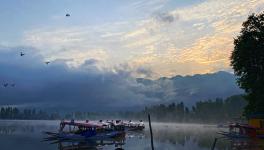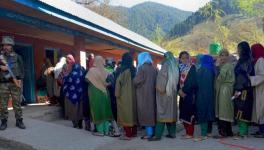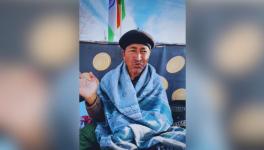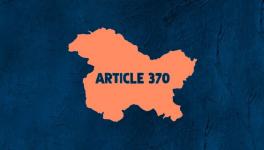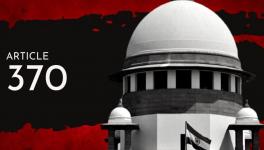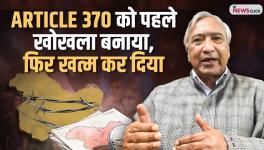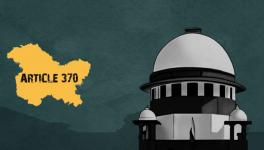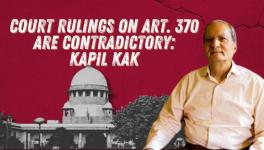In Jammu and Kashmir, No Incentive to Build Bridges Between People
One summer day in the mid-1980s, Maulana Masoodi, a leading Islamic scholar and among the most influential Kashmiri politicians of the 20th century, was approached by state media, Doordarshan Srinagar, for an elaborate interview on his life. He agreed but on the condition that a long-time activist-scholar friend interviews him.
Masoodi wielded immense respect within Kashmiri society, in some respects on par with National Conference founder Sheikh Abdullah. Shot by militants on 13 December 1990 at 87, Masoodi shot to fame at several critical moments of Kashmir’s volatile history, including the crucial period from 1947 to 1953. On 27 December 1963, the Moi-e-Muqqadas, a holy relic that many believe is a strand of hair of the Prophet Mohammad, went missing from the Hazratbal shrine. His leadership and political sagacity ensured the protesters remained largely peaceful, and their agitation did not decay into chaos.
In a prescient exchange during the interview, Masoodi endorsed the interviewer’s assessment that Jammu and Kashmir would have had a different history if the Maulana were an ethnic Kashmiri. A Pahari-speaking Muslim, Masoodi was born in the Uri area of Baramulla district, where the Kashmir valley ends and hilly Pakistan-controlled Kashmir begins. He was deeply aware of the political constraints imposed by his ethnicity, and his exchange on that day manifests one of the many structural realities set by post-1947 realities.
The Kashmiri-speaking population in undivided Jammu and Kashmir is estimated at 38.5%, less than those who speak Pothwari, Dogri, Gojri and Punjabi, the other four languages of the region. Linguists once considered the first three “dialects” of the Punjabi language but with time, they gained distinct recognition. All four linguistic groups consume each other’s creative products, such as songs. For instance, it is a commonplace occurrence that a nomadic Bakerwal woman, whose native language is Gojri, would hear Punjabi songs on FM radio. (While Gojri-speakers understand and speak all four languages, Pothwari, Dogri and Punjabi-speakers understand all languages except Gojri.)
Before 1947, Jammu province—including present-day Pakistan-controlled Kashmir and parts of Baramulla and Kupwara districts in the valley that adjoin the Line of Control—spoke the four akin languages. The Line of Control bifurcated the princely state of Jammu and Kashmir, and the entire region that became Pakistan-controlled Kashmir is non-Kashmiri speaking, with Pothwari and Gojri the principal languages.
Except for Muzaffarabad, all other districts in present-day Pakistan-controlled Kashmir were administratively part of the Jammu province. Even the Muzaffarabad district of Pakistan-controlled Kashmir is a non-Kashmiri-speaking area. Unlike Jammu, the partition did not disturb the ethnic base of the Kashmiri-speaking population as the valley remained a single entity. Thus, the Kashmiri-speaking population, predominantly living in the valley, became the largest cohesive ethnic group of bifurcated Jammu and Kashmir.
Jammu and Kashmir’s ethnic or regional contestations are a vital component of the “Kashmir tangle”. Yet this subject has remained under-researched, even though it requires rigorous inter-disciplinary knowledge. Created in the 19th century by a merger of diverse cultural and geographical units, Jammu and Kashmir was one of the largest princely states and the most diverse in terms of geography, ethnicity and religion. As per the 1941 Census, the population of Jammu was 19 lakh, whereas that of Kashmir was 17 lakh. Geographically and by ethnicity and religion, the valley is relatively more homogenous than Jammu.
According to the 2011 Census, Kashmir’s population is nearly 16 lakhs more than that of Jammu, although the area of Jammu is almost double the size of the valley. At the same time, the Kashmir valley also has a non-Kashmiri speaking population; its Gujjar and Pahari population. So in totality, the ethnic Kashmiri people in the valley and the non-ethnic Kashmiris in Jammu and Kashmir are numerically nearly equal.
The delimitation commission was created to allocate and demarcate new Assembly segments after 5 August 2019. One of the expectations from it was that its report would address the rising ethnic and regional polarisation that has shaped the critical political developments. In December 2021, the commission proposed six new Assembly constituencies in Jammu and one in Kashmir. In the last Assembly, the Kashmir valley had 46 seats, whereas Jammu had 37. There were protests in both regions as each felt inadequately represented by that proposal. While valley politicians claimed that population alone should be the criterion in deciding the allocation of Assembly segments, Jammu politicians pointed out that arduous geography should allow them to have more seats.
Unlike the valley, Jammu province is geographically a diverse unit. Jammu is 26,689.4 sq km, while Kashmir is 15,520 sq km. Bound by the river Ravi and the Pir Panjal range, the altitude of Jammu province also varies from almost sea-level (as parts of it adjoin undivided Punjab) to 16,000 feet. Take Padder in Kishtwar, which is proposed to be a new Assembly segment in Jammu and adjoins the Zanskar area of Ladakh. A new seat may provide better representation to such an inaccessible area in the Jammu and Kashmir Assembly, but it will be far from adequate an institutionalised response to address the specific problems of any such region.
By contrast, Kashmir valley, a plain area, has slight variations as the average elevation is 6,070 ft above sea level, and the distance from Srinagar, the provincial headquarters of the valley, to its other parts takes but a few hours. Uri, the main frontier of the valley along the Line of Control, is a less than three hours’ drive from Srinagar.
In the same vein, even though linguistically akin, the non-Kashmiri-speaking ethnic communities have their own specific issues. In February 2022, the bulk of the Scheduled Tribe (ST) Assembly segments were allocated in Jammu’s Rajouri-Poonch belt near the Line of Control. Here, the Gujjar-Bakerwal are 35% of the population on average and all of them are Muslims. On 19 April 1991, in the context of rising militancy, it is a nod from former prime minister Chandra Shekhar that approved the Gujjar-Bakerwals’ ST status. The Paharis, who co-inhabit Jammu’s Rajouri-Poonch areas, other than Kashmir’s Kupwara and Baramulla districts, also revitalised their demand for ST status. However, the Gujjars oppose granting ST status to the Paharis as they fear it will eat into their reservation pie. Anxious over this development, the Gujjar community has taken to the streets. Community members dispute the Pahari claim to tribal status and allege that the Paharis have no glue except language, beyond which they comprise diverse caste groups, including elite-caste Muslims and Hindus. On the other hand, Pahari leaders say that only the nomadic Bakerwal community truly fulfils the conditions for being labelled as tribal. They argue that the Gujjars, many of whom have settled, share their socio-economic conditions.
The official criteria to specify a community as a Scheduled Tribe are whether it demonstrates indications of primitive traits, distinctive culture, geographical isolation, shyness from contact and backwardness. Like Bengal and Punjab, Jammu and Kashmir underwent a radical change after 1947. In other words, the Pahari identity is a socio-political construction that took shape on this side of the Line of Control under the altered realities.
As mentioned earlier, in Jammu and Kashmir’s context, the Pahari language was construed as one of the dialects of Punjabi—some called it ‘highland’ Punjabi. It got separate recognition in the 1911 Census. Pahari is the language people speak in areas near the LoC in Kashmir and Jammu. Hindu and Sikh migrants from Pakistan-controlled Kashmir in 1947, (many now deceased), also speak Pahari.
In at least four Assembly seats in areas along the LoC, Pahari leaders—of all parties—face political extinction because of political reservation, a consequence of the abrogation of Article 370 in 2019. They are vociferously backing the demand. The demand is also an instrument to garner state employment. Unlike other parts of India, there is hardly any physical infrastructure within Jammu and Kashmir that can create sustainable, long-term economic security in the non-state sector.
An affirmative action policy also requires a granular understanding of all issues. The design of the ST schemes for the Bakerwals were weak and they were targeted in such a manner that they failed to address their nomadic character. Even the debate about affirmative action has a distinct regional character that requires a bottom-up study and understanding.
In the valley, Kashmiri-speaking society is homogenous in language and ethnicity, irrespective of religion. Gujjars, with their distinct culture, stand out there. Economically as well, they are relatively less integrated. The Wagay caste of Kashmiri-speaking Muslims deals with the dairy trade, which is the traditional occupation of the Gujjars. The realities change to the South of the Pir Panjal range—in Jammu division—where there is more heterogeneity in religion and ethnicity. Apart from Gojri, the Gujjars are fully conversant in other languages such as Pahari, Dogri and Punjabi.
For centuries, like the Hindu Gujjars in parts of North India, the Muslim Gujjars have been involved in dairy farming in Jammu and Kashmir. In neighbouring undivided Punjab, Gujjar Muslims reportedly had a population of nearly 4.6 lakh in the 1901 Census. The lens of marginalisation here is similar to that of Hindu Gujjars in other parts of North India. In the same vein, several communities such as the Lohars, Telis and others, within the Pahari-speaking people, are historically marginalised.
For these reasons, bereft of comprehensive, inter-disciplinary knowledge, formulating a one-size-fits-all affirmative action policy can have harmful effects, and pit communities against one another. This kind of worrying situation seems to be unfolding along the LoC.
Both regions have specific problems that warrant customised regional decentralisation in the broader framework of asymmetrical federalism. In the last 75 years, the only detailed proposal that addressed the structural issues of Jammu and Kashmir is the report by the activist-scholar late Balraj Puri, an internationally acclaimed authority on Jammu and Kashmir. His Jammu and Kashmir Regional Autonomy Report was released in book form in 1999. It is widely available in the public domain, and any sincere attempt to address these issues should consult it.
To be fair to the Delimitation Commission, its members cannot arrest the multi-layered ethnic and regional cleavages involved here considering their limited mandate. That said, political actors have little incentive to build bridges today, as such initiatives will get bulldozed in the structural realities of regional and ethnic polarisation. Like the Globe of Death in circuses that stunt bikers repeatedly circle within mesh sphere balls, the structural realities of Kashmir are forcing another generation of political actors in Jammu and Kashmir to get embroiled in repeated motions of ethnic and regional contestations.
(The writer is the author of two books on Jammu and Kashmir, including Across the LoC, Columbia University Press. The views are personal.)
Get the latest reports & analysis with people's perspective on Protests, movements & deep analytical videos, discussions of the current affairs in your Telegram app. Subscribe to NewsClick's Telegram channel & get Real-Time updates on stories, as they get published on our website.









